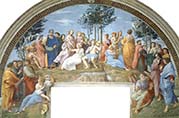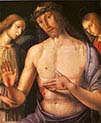Raffaello Sanzio (Raphael)
1483-1520 Italy/High Renaissance
Click an Image to Enlarge
woman with
a veil

el parnaso

School
of Athens

Liberation of
Saint Peter

la disputa

Saint
George

Balthazar
Castiglione

Bindo
Altoviti

Agnolo
Doni

Lo Spasimo
di Sicilia

Christ
Supported

Betrothal

Entombment

Pope
Julius

Elisabetta
Gonzaga

A Young
Woman

Saint
George

Draught
of Fishes

The
Crowning

Sistine
Madonna

Transfiguration
